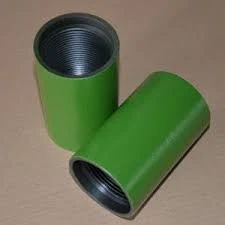Irrigation Pipe Connector Solutions for Efficient Water Management and Joint Maintenance
Understanding Irrigation Pipe Couplings Key to Efficient Water Management
Irrigation plays a pivotal role in modern agricultural practices, ensuring crops receive the necessary water for optimal growth. Among the various components that contribute to effective irrigation systems, pipe couplings are often overlooked, yet they are fundamental in maintaining the integrity and efficiency of these systems. This article explores the significance of irrigation pipe couplings, their types, materials, installation processes, and maintenance tips.
The Importance of Pipe Couplings
Pipe couplings are connectors that join two or more pieces of pipe, allowing for the seamless transfer of water throughout an irrigation system. These couplings ensure that water flows without interruption and minimizes leaks, which can lead to water wastage and potential crop damage. Given the high stakes associated with agriculture, utilizing the correct couplings can significantly enhance water efficiency and reduce costs.
Types of Irrigation Pipe Couplings
There are several types of irrigation pipe couplings available, each designed for specific applications. The most common types include
1. Compression Couplings These are easy to install and work well with various pipe materials. Compression couplings create a watertight seal by using a rubber gasket that compresses when tightened.
2. Threaded Couplings These couplings have internal threads on one end for connection to threaded pipes. They are often used for metal piping and are suitable for high-pressure applications.
3. Slip Couplings Ideal for repairing damaged sections of pipe, slip couplings slip over the ends of the existing pipe and provide a quick and efficient solution.
4. Union Couplings These consist of three pieces and can be easily unscrewed, allowing for easy disassembly of the pipe system for repairs or modifications.
5. Barbed Couplings Often used for flexible hoses, barbed couplings feature ridges that secure the hose in place, providing a reliable connection.
Materials Used in Pipe Couplings
The choice of material is crucial for the longevity and effectiveness of irrigation pipe couplings. Common materials include
- PVC (Polyvinyl Chloride) Lightweight and resistant to corrosion, PVC is widely used in irrigation systems, especially for underground applications. - Metal Couplings made from materials like brass or stainless steel are durable and suitable for high-pressure systems. They are often used where strength and resistance to environmental factors are required.
irrigation pipe coupling

- Polyethylene This flexible material is commonly used for drip irrigation systems and offers resistance to UV rays.
Installation Process
Proper installation of irrigation pipe couplings is essential for optimal performance. Here are some key steps to follow
1. Prepare the Pipe Ends Ensure that the ends of the pipes are clean and free of debris to guarantee a good seal.
2. Choose the Right Coupling Select a coupling that matches the pipe size and type.
3. Follow Manufacturer Instructions Adhere to the installation guidelines provided by the coupling manufacturer for the best results.
4. Test for Leaks Once installed, turn on the irrigation system and check all couplings for leaks. Tighten as needed.
Maintenance Tips
Regular maintenance of irrigation pipe couplings is vital to prevent failures. Here are some tips
- Inspect Regularly Check for signs of wear, corrosion, or damage, especially after extreme weather events.
- Clean the Area Keep the coupling area clear of dirt and debris to prevent clogging and ensure proper function.
- Replace When Necessary Don’t hesitate to replace old or damaged couplings to maintain system integrity.
In conclusion, irrigation pipe couplings may not be the most glamorous aspect of an irrigation system, but their role in water conservation and efficiency cannot be overstated. By understanding the various types, materials, installation methods, and maintenance needs of these couplings, farmers and agricultural professionals can enhance the sustainability and productivity of their irrigation systems, ultimately leading to more successful crop yields.
-
Unlock the Benefits of Pup Joints for Your OperationsNewsOct.31,2024
-
The Quality of Casing Couplings from ChinaNewsOct.31,2024
-
The Essential Role of Pup Joints in Drilling OperationsNewsOct.31,2024
-
The Benefits of Tubing Couplings for Your ProjectsNewsOct.31,2024
-
Enhance Your Drilling Operations with Tubing Pup JointsNewsOct.31,2024
-
Elevate Your Drilling Operations with Tubing CrossoversNewsOct.31,2024







